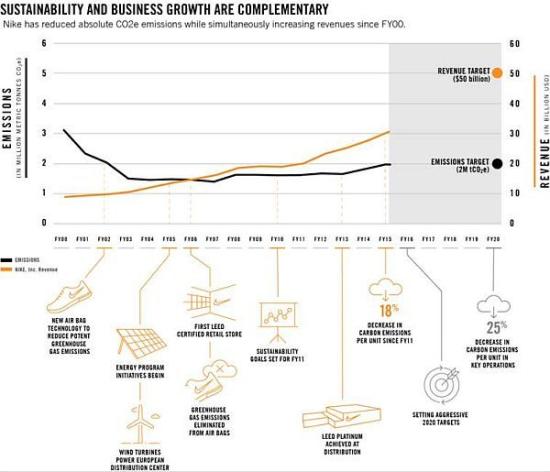Embracing the circular economy is a good idea. Understanding the basics of the circular economy is the key to making progress. It ensures you ask the right questions and offers a view of the entire picture.
In a previous blog, we described why embracing the circular economy is a good idea. This article is the second in a series of publications introducing this circular economy standard.
|
The key principles described in BS8001:2017 are illustrated in the figure above. This article will briefly introduce those principles and their respective interactions. As expected, you may recognise elements of good business practice from other schools of thought, along with management systems focusing on quality, environmental impact, etc. Here, we describe the principles as published in the first circular economy standard and provide you with examples and practice we have identified in industry.
System Thinking
Principle: 'Organisations adopt a holistic approach to understand how individual decisions and activities interact within the wider system they are part of.'
Companies act within a network. From a supply chain perspective, this is a well-known concept. However, many other influences impact the company's environmental and economic performance. Exploring such interdependencies will require special attention. Over and above key actors and other stakeholders, external factors (policy constraints, technological changes, consumer behaviour, etc) also influence the business landscape. A less obvious notion lies in the identification of levers and feedback loops (positive and negative feedback loops), relationships (formal and informal) and systemic interventions (product-service innovations, new data access…) and of their impact. Systems do not always behave as expected and the manifestation of the effects of specific action can largely vary. Thinking in terms of systems may help organisations to manage and improve on complexity, and to identify the potential long-term consequences of their decisions and activities.
Innovation
Principle: 'Organisations continually innovate to create value by enabling the sustainable management of resources through the design of processes, products/services and business models.'
Innovation can be the result of research and development, but it can also be a result of smart design or progressive collaboration. Innovation is critical in facilitating the transition towards a more circular mode of operation. Circularity requires a complete new perspective on consumption and production, hence continually challenging current business practice. As a result, technological innovation is only one part of the innovative activities requiring management.
|
The brand SEB experimented with a pay per use model for a set of household appliances, marketed under the name of Eurêcook. Beyond business model innovation, the project also illustrated expected and unexpected systemic effects, such as impact on product design, impact on repackaging activities, logistics… |
Stewardship
Principle: 'Organisations manage the direct and indirect impact of their decisions and activities within the wider system they are part of.'
Within this context, the definition of stewardship is the responsibility an organisation has with regard to all the facets of its decisions and activities. The impact of product design, supply chain and customer satisfaction throughout the entire product life cycle should be considered by company management, which should take into account economical, environmental and social issues, both now and in the future. Stewardship is about accountability on the impact the company has within its wider system.
|
Nike's vision 'Double our business with half the impact' requires focus on innovation that leads to products designed for recycling (such as woven upper structures reversibly 'fixed' to recyclable bio-based soles), thereby lowering impact on the supply chain (distribution centres, increased transport by ship, etc.). |
(Graph source: Nike)
Collaboration
Principle: 'Organisations collaborate internally and externally through formal and/or informal arrangements to create mutual value.'
Due to the intended transformation towards more circular modes of operation, it is unlikely that companies achieve this without collaboration. Progressive collaboration between businesses (such as cross-sectoral collaboration), governments, academia, civil society and consumers is essential. The development of a joint approach involving mutually determined objectives and implying reciprocal trust forms the basis of successful collaboration. The inherent need for clear communication, a shared vision and purpose is applicable to both internal and external collaboration.
|
Even in the case of small-scale experiments, collaboration between multiple stakeholders is required. In our Baby Bottle Reborn project, collaboration between Materni, UZ Leuven, Go4Circle, Fost Plus, Indaver, Van Ganzewinkel, Ovam and Sirris was required to take small steps. |
Value optimisation
Principle: 'Organisations maintain all products, components and materials at their highest value and utility at all times.'
Value can be achieved by reducing cost, via access to less expensive materials or through waste reduction, or by creating new sources of revenue, such as the provision of new products or services, or less quantitative value like improved customer relationship or increased resilience. Three approaches are described in the BS8001 standard:
- Waste and side streams can become value. The BS8001 standard focuses on a materials perspective, whereas, it appears clear that other side streams (energy, heat, …) can also be valorised. The effort to reduce impact through tweaked production processes, new product end-of-life processes and the use of harmless substances requires attention.
- Value captured from resources by using products longer or in multiple-use cycles. Again this requires collaborative efforts.
- Spared capacity in space or in equipment can also be a lever for new value streams.
Over and above these approaches, continuous reduction of energy consumption and improved energy efficiency in both processes and products can maximise value creation.
Transparency
Principle: 'Organisations are open about decisions and activities that affect their capacity for transition towards a more circular and sustainable mode of operation and are willing to communicate these in a clear, accurate, timely, honest and complete manner.'
Transparency should be favoured by making information accessible, either proactively or on request. This does not mean that IP cannot be preserved. It will re-address the exchange of information in line with the process of building mutual trust within internal and external collaboration.
|
AW Europe is remanufacturing automatic transmission systems for the majority of motor vehicle manufacturers, on a large scale. Their system is subject to constant exploration and evolution. Besides being the subsidiary of the Japanese gearbox manufacturer, they have ties with European vehicle manufacturers, (independent) vehicle repair sites, logistic partners, sales channels, etc. Collaboration is also needed to optimise the incoming and outgoing logistics flows. Furthermore, data collection and knowledge build-up generated by inspection, repair and failure mode analysis needs to be optimally valorised. Looking to the future, AW Europe could benefit from product use data captured by sensors inside its gearboxes, which would enable gear box design and maintenance to be further improved. To achieve this, motor vehicle manufacturers and AW Europe need to explore new system boundaries. These examples illustrate the increasingly complex relationships this type of company activity requires compared to regular manufacturing and sales. ItThey also illustrate that the described principles can only be seen as interlinked activities. |
Conclusion
This section of the BS8 8001 standard provides an insight into its basic principles and how they impact each other. It is virtually impossible to innovate and to create impact over the entire product lifecycle without collaboration or without considering the system within which your product will eventually end its functional life.
One could say that the circular economy principles as such combine to form an interlinked system. The good news is that by focusing on one principle within your company, other principles inevitably come into the picture. Often new insight and levers emerge in those in-between areas and slowly the pieces of the puzzle come together, as and when they areexplored.
One thing is for sure: no company can alone build 'its own' circular economy. By definition, collaboration within a systems network applies, since the stewardship principle states that your company remains accountable. This means that the impact of your company's involvement is partly governed by activities from other actors within the network. Furthermore, environmental impact stretches well beyond your own company frontiers.
In a next article we describe how to compile your puzzle. We will briefly explain briefly the framework of the BS8001 standard and explain how you can get started.
Our services
Sirris and Agoria assist and support companies on their way towards a circular economy. Our initiative identifies small structural steps towards the desired future, while monitoring and strengthening employee and other stakeholder involvement. This approach allows companies to discover, step by step, which added value can be achieved and results in concrete action to cash in on that added value. Content and speed are adjusted to fit the company's specific organisation.
Our business-oriented approach consists of an exploratory meeting, awareness-raising, advice and assistance, while investigating which opportunities and concrete solutions are available for your company.
In addition, there is also a collective approach through the Circular Economy Connect learning network, which offers opportunities for networking and peer-to-peer learning. Within this network you will be offered the opportunity to enter into contact with leading guest speakers, to visit other inspiring companies, to exchange experience with other companies, to reach solutions for shared challenges together and to attend interactive workshops.
This article is published within the framework of the ‘Eco-compliance als competitief wapen’, project coordinated by Sirris and Agoria, with support from VLAIO.
(Source picture above @ Sirris, based on BS8001)
]]>





